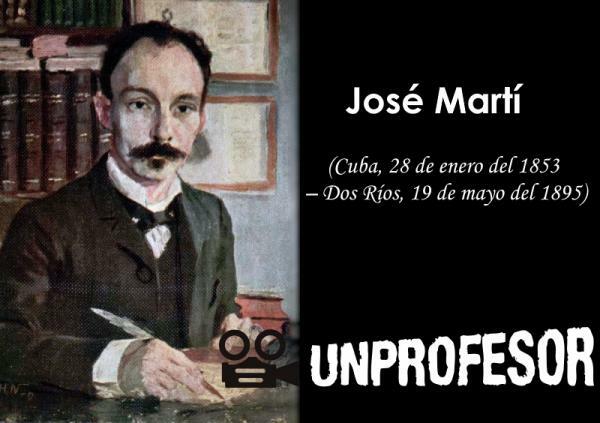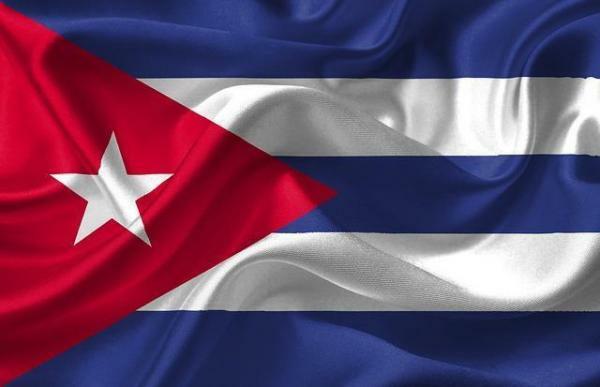Biography of José Martí

The Cuban War of Independence It was one of the most important events that occurred at the end of the XIX S, being a drastic moment for our country, because it was in the year 1898 when all the remaining colonies of the Empire were lost Spanish. In this lesson from a TEACHER we will give you a summarized biography of José Martí, one of the most important figures for that period, as he was the creator of the Cuban Revolutionary Party, which in 1895 began the so-called War Needed, which sought the independence of Cuba.
Index
- José Martí and his political involvement
- The creation of the Cuban Revolutionary Party
- From Fernandina to War
- Death of José Martí
José Martí and his political involvement.
José Julián Martí Pérez was born in Havana on January 28, 1853, in the bosom of a wealthy family, his father being the Valencian, Mariano Martí and his mother Leonor Pérez Cabrera, of Canarian origin. In 1866 he was enrolled in the institute of secondary education in Havana.
Already early he had friction with politics and with the Spanish government on the island and thus on October 21, 1869 he was arrested, accused of treason, because he had mocked the intentions of an acquaintance of his to enlist in the army to fight against the independentistas who were already acting on the island.
On March 4, 1870, he was sentenced to six years in prison that were commuted to exile to the current Isle of Youth. Due to the influence of his father, he succeeds in making January 15, 1871 deported to Spain, where he began his studies at the universities of Madrid and Zaragoza later, where he would graduate in Civil Law and in Philosophy and Letters.
After a brief trip through France and New York, he arrives in Mexico where he is reunited with his family (not he had the right to enter the island), although he managed to enter under the name Julián Pérez on February 24, 1877. It was during this stay on the island that he would meet his future wife, Carmen Zayas Bazán.
After this he would travel to Guatemala where he was working as a professor of Literature and History of Philosophy. On December 20, 1877, he returned to Mexico to marry Carmen Zayas Bazán, with whom he would only have one son, José Francisco, a year later.

The creation of the Cuban Revolutionary Party.
Continuing with our summarized biography of José Martí to speak now of August 31, 1878 when he managed to return to Cuba. Here he began to relate to the Cuban Revolutionary Central Club, who named him vice president on March 18, 1879. Since then he continued to radicalize and send correspondence with exiles in the United States, from where they sent support.
On September 17, 1879, he was arrested again by the Spanish, after an uprising that occurred near Santiago de Cuba, in this way he was deported back to Spain. From that moment and from political exile, he worked writing articles and bringing together his comrades for an upcoming action against the Spanish Government to get the independence of the island.
In addition, he was working on the idea of creating a new independent party with which to unite all the revolutionaries, said party would see the light on November 30, 1887, date on which the commission was created executive of Cuban Revolutionary Party.
In this other lesson from a TEACHER you will find a summary of the independence of Cuba.
From the Fernandina to the War.
Continuing with our biography of José Martí We must know that, during the years 1893 and 1894, he made a trip through many of the countries of Latin America and part of the USA, where he was interviewing the leaders of the War of 1868, with whom he was making the plan of a next contest.
This accelerated from 1894, trying to get a short war for the Cubans. In this way, on January 29, 1895, he signed the uprising together with the colonels. Mayía Rodríguez and Enrique Collazo, and on April 28 of that same year, at the La Mejorana meeting, he discussed the plan to follow for the liberating army.

Image: Pinterest
Death of José Martí.
On May 19, 1895, a group from the Spanish army column deployed in the Dos Ríos area, where the independentists were camped. After a series of shootings, while trying to escape, he was hit by several shots that caused his death.
After this, his body could not be immediately rescued by his companions, therefore, his body he would suffer three burials before the final one. He was permanently buried on May 27 at the Santa Ifigenia Cemetery, in Santiago de Cuba.
In this other lesson we discover a brief summary of the Cuban Revolution.
If you want to read more articles similar to Biography of José Martí - Summarized, we recommend that you enter our category of Story.



